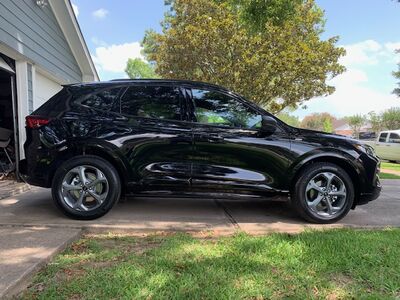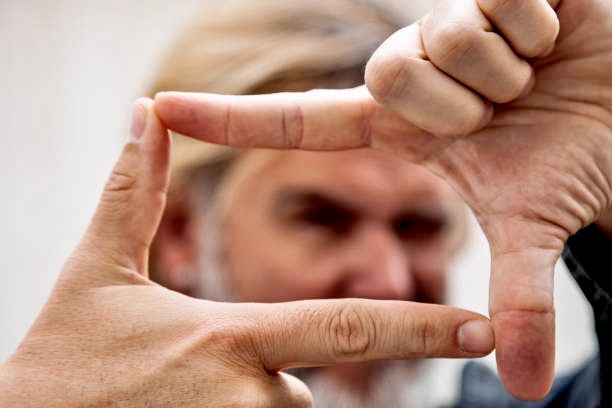Looking For A Book On Composition
May 10, 2022 06:52:33 #
Here is a link to a short article you could print off for your students.
I took about 30 hours of photography courses in undergrad/graduate school. The days we learned composition were some of the more enjoyable classes for me.
https://www.pixpa.com/blog/photography-composition-techniques
I took about 30 hours of photography courses in undergrad/graduate school. The days we learned composition were some of the more enjoyable classes for me.
https://www.pixpa.com/blog/photography-composition-techniques
May 10, 2022 07:21:53 #
rdgreenwood wrote:
I'm an old photographer--I started in 1968--so whe... (show quote)
Hmm…
According to several philosophers, nothing exists outside the mind until it has a name. As many of us know, and some may remember, Adam’s first job was to name the animals, for the purpose, I imagine, of classifying relationships of one type animal to another. It is said that poetry is a tool for describing things that are as yet un-named… those “feelings” words don’t describe. Compositional “rules” give names for relationships, but our own particular “poetry” as rdgreenwood suggests, that feeling in the heart, is what gives specificity to that message.
I remember a photographer, a smart guy who learned all the rules and applied them… i.e., a red rose in a tall vase placed 1/3 in from the right and the background is green to make the color pop. Note that’s lower case “pop” and no exclamation point. Or, an old man (check), kerosene lantern (check), bible/pistol/whisky bottle/sandwich (check, check, check (actually, the sandwich was my idea, it wouldn’t have occurred to him to use a sandwich)). His images were well exposed, sharp, and he checked all the compositional boxes, but to me there was nothing exciting in his images; there was no nuance, never a surprise, no originality; all were formulaic and predictable… dull, repetitive… like this sentence… but every image of his, that I saw, was reliably adequate for its intended purpose. His strong personality and salesmanship kept him afloat and I suppose his customers were satisfied so he gets credit as a successful businessman… but he was neither artist nor poet.
May 10, 2022 07:30:06 #
rdgreenwood wrote:
I'm an old photographer--I started in 1968--so whe... (show quote)
I studied the Old Masters paintings!!! beats the hell out of any book!
May 10, 2022 08:10:13 #
User ID wrote:
The very thought of such a book is huuuuugely sad. Its also just plain disgusting.
You are some form of teacher. Show students the broad and shining path.
You are some form of teacher. Show students the broad and shining path.
Everyone starts somewhere and needs some form of foundation. Not everyone intuitively creates good composition. One only needs to peruse the UHH photo gallery to find hundreds of examples. It helps to know the rules before intentionally breaking them.
The OP asked for book references, not a critique of his teaching ability, of which you could not possibly have any knowledge.
To which I will throw in Bryan Petersen’s “Understanding Composition” as an easy read.
May 10, 2022 08:16:16 #
I got my ideas about composition from reading photo magazines back around the time you started. After you see hundreds of nicely composted pictures, you get an idea what you should aim for. When I'm out in public, I automatically picture nice compositions in the scenery around me.
May 10, 2022 08:24:19 #
I have a book titled Mastering Composition. It's written by Richard Garvey-Williams. It has very good explanations of the many samples in the book. I found it to be quite useful.
May 10, 2022 08:51:29 #
Craig Meyer
Loc: Sparks, NV
User ID wrote:
I'm not against book learning. I'm against treating composition like a subject, like a series of lessons as if it was some sort of a technique or a procedure.
I'm not against book learning. I'm against treating composition like a subject, like a series of lessons as if it was some sort of a technique or a procedure.
I'm not in disagreement with the spirit of your position. However, there are some nearly universal "formats" that have been used over the centuries by visual artists that assist a photographer in the "Planning the frame" step of a composition. The "thirds," golden spiral, Fibonacci curves and others. They vary across cultures, as well.
For a photographer beginning the quest, using a tried and true starting point, just as in lighting, is a good beginning to start "working the scene." And in each iteration of the "Working" move the subject around IN the frame for a pleasing relationship with the other elements AND will lead the viewer's eye through the resultant "imagined" final image.
This is easier done in digital with review screens and "free" electrons, but time consuming and yields a huge number of images to sort through to hit on the one that is the best composition for that image on that day.
Perhaps. like presets in PP, a "book" or similar "study and knowledge guide" could yield a better starting point.
When I went to photo school, in the film daze, we used a print mat cut diagonally in half, and we walked around an allegedly photogenic (convenient) location and used the "Cropping "L's" to frame our composition before even [putting camera to the eye. After all, 36 exposure T-max and the attendant cost of chemicals and paper and lab time even for a, then, affluent tech sales guy, was daunting--time being the most scarce.
After training ourselves in what to "look for" we were able to come onto a scene and begin with (starting points of our own) a number of composition candidates. Amazingly, during image review class, our class of 15 probably exhibited 40 good different compositions. Each student, 1st year, had at least one. Many were "thirds" but left right, Upper lower. OR, significantly, slight variations that made a particular subject work because of something else, like texture, leading lines or inherent lines and shadows. So, in 2 weeks we got a head start and were producing well composed images. Focus? exposure? sharpness? We had the rest of the quarter to refine our technique. But I WILL say, that working for hours in the WET smelly darkroom becomes easier if you're processing a well composed image--of your own.
C
Sorry OP. no books, other than those of the Painting masters, and exposure to the photo masters, as well. Try the art of photography on YouTube. He covers composition in depth.
If a book helps, or a video or cropping "L's" work, go for it. The better the starting point, the less unproductive time wasted. And the better and sooner are the results. Clearly my class put in the field time and the shutter counts to earn our knowledge.
C
May 10, 2022 08:54:47 #
May 10, 2022 09:25:46 #
fuminous wrote:
Hmm… br According to several philosophers, nothin... (show quote)
That practitioner is posting under multiple names in the Gallery section.
May 10, 2022 09:37:43 #
RD, here's a video that may help you. https://www.youtube.com/watch?v=UW-yvK4vJrc
--Bob
--Bob
rdgreenwood wrote:
I'm an old photographer--I started in 1968--so whe... (show quote)
May 10, 2022 09:45:06 #
mikeroetex wrote:
Everyone starts somewhere and needs some form of foundation. Not everyone intuitively creates good composition. One only needs to peruse the UHH photo gallery to find hundreds of examples. It helps to know the rules before intentionally breaking them.
The OP asked for book references, not a critique of his teaching ability, of which you could not possibly have any knowledge.
To which I will throw in Bryan Petersen’s “Understanding Composition” as an easy read.
The OP asked for book references, not a critique of his teaching ability, of which you could not possibly have any knowledge.
To which I will throw in Bryan Petersen’s “Understanding Composition” as an easy read.
I dont need ANY knowledge at all of his teaching ability, cuz I did not critique his teaching ability.
As to the idea of "know[ing] the rules before intentionally breaking them", read what you wrote. Its clearly just circular reasoning. NOT knowing the "rules" rules out intent ... but it ushers in freedom.
May 10, 2022 09:59:30 #
User ID wrote:
The very thought of such a book is huuuuugely sad. Its also just plain disgusting.
You are some form of teacher. Show students the broad and shining path.
You are some form of teacher. Show students the broad and shining path.
I have to disagree with this statement. There are many modes to learning, reading is one. Others, yes, are by example or watching another, lectures, hands-on, trial and error, what ever works for the student. I personally am sort of a read about it and then try it.
Try not to be rude to other UHH'ers.
May 10, 2022 10:00:23 #
Guyserman
Loc: Benton, AR
jerryc41 wrote:
I got my ideas about composition from reading photo magazines back around the time you started. After you see hundreds of nicely composted pictures, you get an idea what you should aim for. When I'm out in public, I automatically picture nice compositions in the scenery around me.
Thanks for the grin. Actually, most of my pictures should go on the compost pile.
May 10, 2022 10:00:40 #
[quote=Craig Meyer] I'm not in disagreement with the spirit of your position. However, there are some nearly universal "formats" that have been used over the centuries by visual artists that assist a photographer in the "Planning the frame" step of a composition. The "thirds," golden spiral, Fibonacci curves and others. They vary across cultures, as well.
For a photographer beginning the quest, using a tried and true starting point, just as in lighting, is a good beginning to start "working the scene." And in each iteration of the "Working" move the subject around IN the frame for a pleasing relationship with the other elements AND will lead the viewer's eye through the resultant "imagined" final image.
This is easier done in digital with review screens and "free" electrons, but time consuming and yields a huge number of images to sort through to hit on the one that is the best composition for that image on that day.
Perhaps. like presets in PP, a "book" or similar "study and knowledge guide" could yield a better starting point.
When I went to photo school, in the film daze, we used a print mat cut diagonally in half, and we walked around an allegedly photogenic (convenient) location and used the "Cropping "L's" to frame our composition before even [putting camera to the eye. After all, 36 exposure T-max and the attendant cost of chemicals and paper and lab time even for a, then, affluent tech sales guy, was daunting--time being the most scarce.
After training ourselves in what to "look for" we were able to come onto a scene and begin with (starting points of our own) a number of composition candidates. Amazingly, during image review class, our class of 15 probably exhibited 40 good different compositions. Each student, 1st year, had at least one. Many were "thirds" but left right, Upper lower. OR, significantly, slight variations that made a particular subject work because of something else, like texture, leading lines or inherent lines and shadows. So, in 2 weeks we got a head start and were producing well composed images. Focus? exposure? sharpness? We had the rest of the quarter to refine our technique. But I WILL say, that working for hours in the WET smelly darkroom becomes easier if you're processing a well composed image--of your own.
C
Sorry OP. no books, other than those of the Painting masters, and exposure to the photo masters, as well. Try the art of photography on YouTube. He covers composition in depth.
If a book helps, or a video or cropping "L's" work, go for it. The better the starting point, the less unproductive time wasted. And the better and sooner are the results. Clearly my class put in the field time and the shutter counts to earn our knowledge.
[/quote]
For a photographer beginning the quest, using a tried and true starting point, just as in lighting, is a good beginning to start "working the scene." And in each iteration of the "Working" move the subject around IN the frame for a pleasing relationship with the other elements AND will lead the viewer's eye through the resultant "imagined" final image.
This is easier done in digital with review screens and "free" electrons, but time consuming and yields a huge number of images to sort through to hit on the one that is the best composition for that image on that day.
Perhaps. like presets in PP, a "book" or similar "study and knowledge guide" could yield a better starting point.
When I went to photo school, in the film daze, we used a print mat cut diagonally in half, and we walked around an allegedly photogenic (convenient) location and used the "Cropping "L's" to frame our composition before even [putting camera to the eye. After all, 36 exposure T-max and the attendant cost of chemicals and paper and lab time even for a, then, affluent tech sales guy, was daunting--time being the most scarce.
After training ourselves in what to "look for" we were able to come onto a scene and begin with (starting points of our own) a number of composition candidates. Amazingly, during image review class, our class of 15 probably exhibited 40 good different compositions. Each student, 1st year, had at least one. Many were "thirds" but left right, Upper lower. OR, significantly, slight variations that made a particular subject work because of something else, like texture, leading lines or inherent lines and shadows. So, in 2 weeks we got a head start and were producing well composed images. Focus? exposure? sharpness? We had the rest of the quarter to refine our technique. But I WILL say, that working for hours in the WET smelly darkroom becomes easier if you're processing a well composed image--of your own.
C
Sorry OP. no books, other than those of the Painting masters, and exposure to the photo masters, as well. Try the art of photography on YouTube. He covers composition in depth.
If a book helps, or a video or cropping "L's" work, go for it. The better the starting point, the less unproductive time wasted. And the better and sooner are the results. Clearly my class put in the field time and the shutter counts to earn our knowledge.
[/quote]
May 10, 2022 10:25:52 #
gvarner
Loc: Central Oregon Coast
Chapter 1 - Choose a subject
Chapter 2 - Plan ahead
Chapter 3 - Select your tools
Chapter 4 - Work the scene
Chapter 5 - Capture your vision
I’m being a bit facetious here but I think it’s a good laundry list of things to consider in "making" a photo as opposed to taking one.
Chapter 2 - Plan ahead
Chapter 3 - Select your tools
Chapter 4 - Work the scene
Chapter 5 - Capture your vision
I’m being a bit facetious here but I think it’s a good laundry list of things to consider in "making" a photo as opposed to taking one.
If you want to reply, then register here. Registration is free and your account is created instantly, so you can post right away.








